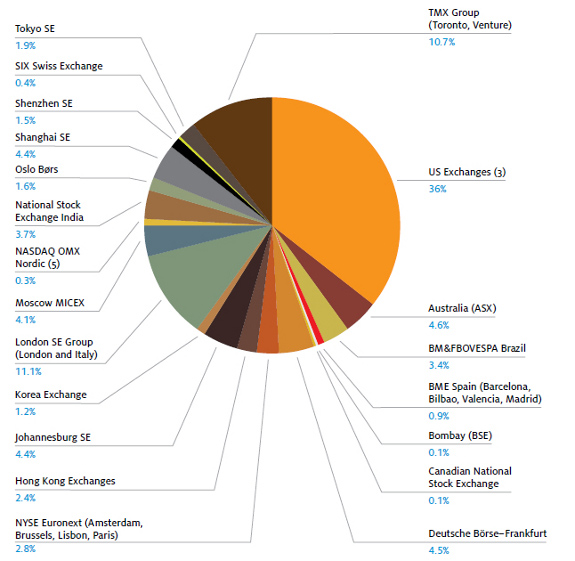
Analyzing Global Stock Exchanges
Where good governance and transparency are lacking, natural resource wealth can fail to deliver the benefits it should, and can even hinder growth. Too often, the secrecy surrounding extractive industry transactions with governments has allowed large-scale corruption to flourish, and left citizens without access to critical information on the value of their natural resource assets.
In July 2010, the United States took an historic step toward addressing these issues by passing the Dodd-Frank Financial Reform Act. Section 1504 of the act requires all companies registered with the U.S. Securities and Exchange Commission engaged in the commercial development of oil, gas and minerals to publicly disclose the payments they make to governments, on a country-by-country and project-by-project basis. Section 1504 applies not only to American companies, but also to a large portion of major internationally operating oil, gas and mining companies.
As regulations fall into place in the U.S., mandatory disclosure standards for oil, gas and mining companies have become an emerging norm for the extractive industries. The Publish What You Pay coalition is campaigning for mandatory country-by-country transparency in all capital markets. And the European Union, Canada and other jurisdictions are currently implementing or investigating new disclosure standards to require annual reporting from extractive industry companies along the lines of the U.S. law.
To support these efforts, Revenue Watch has researched the 35 largest non-U.S. stock exchanges by market capitalization, as ranked by the World Federation of Exchanges, as well as the Oslo Børs of Norway, the TSX Venture Exchange, the Canadian National Stock Exchange, and the NYSE, AMEX and NASDAQ exchanges in the U.S., in order to identify publicly traded oil, gas and mining companies worldwide.
This research provides a global snapshot of extractive sector public capital, showing the significance of the sector in these financial markets and the high financial stakes of improved transparency rules. The chart below shows exchanges' share of global market capitalization, based on the value of companies whose primary listing is on each exchange.
Download the full RWI report above, or use our interactive global calculator to compare the value of oil, gas and mining companies on the largest stock exchanges.
Notes: Many securities are cross-listed on multiple exchanges, regardless of the “primary” exchange where they reside. The chart above shows each exchange’s share of total market capitalization for all exchanges researched, using de-duplicated figures to count each security’s value only on its primary listing exchange.
All report and calculator data were updated in 2012 based on financial data and exchange rates as of 17 January 2012, and on new calculations to account for cross-listing on multiple exchanges.